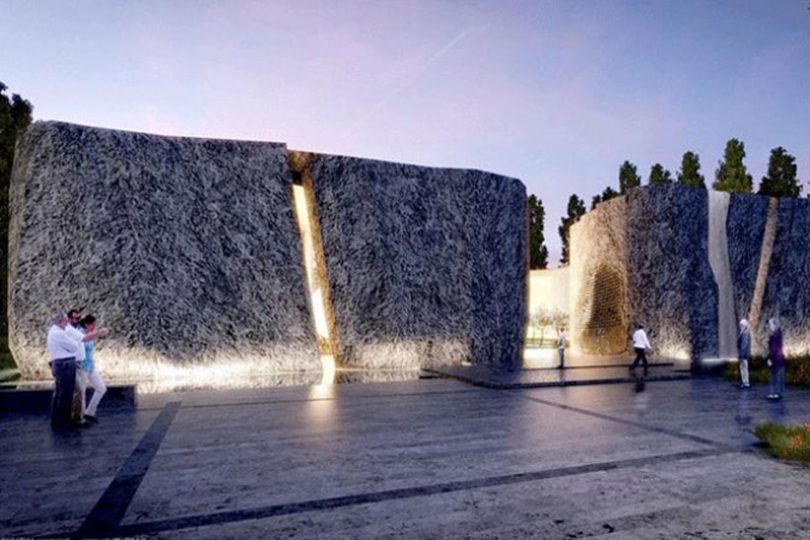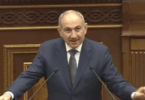Azerbaijanis and their PR supporters will begin their yearly media blitz about events that took place in the town of Khojaly in the region of Nagorno-Karabakh in February 1992. It was in Nagorno-Karabakh where the indigenous Armenians fought the Azerbaijani Army. We will read that events in Khojaly were genocide with victims lacking justice as handed out at Nuremberg. These two claims are an insult to the term genocide and the judgments at Nuremberg. Justice does not begin with falsifying events, selectively deleting massive amounts of information, and using the calamity at Khojaly to convince the world and an otherwise defeated Azerbaijani state that Armenians are barbarians. Let’s look at the record.
First, nobody would have died on either side if Azerbaijan didn’t base its emerging national ethos on the expulsion of Armenians from within the borders granted them jurisdiction by Joseph Stalin.
Second, 90% of Stepanakert, the regional capital of Nagorno-Karabakh, was destroyed mainly from indiscriminate shelling from Khojaly. Azerbaijan had to assume Khojaly was a lead target needing neutralizing.
Third, by February 1992, shelling from Khojaly had killed over 30 members of the Russian 366 Mountain Rifle group stationed in Stepanakert. The Azerbaijanis must have known this military detachment would eventually retaliate.
Fourth, when Armenians finally reached Khojaly and ended the shelling, for a week, Armenians publicly announced on megaphones, radio, and TV, to the civilian population to get out as a final battle was clearly in the works. However, the Azerbaijani military did what it could to prevent civilians from leaving Khojaly. During a last-minute exit of Azerbaijani civilians, using a corridor created by Armenian fighters, shooting began between Azerbaijani soldiers and Armenians, after which many, on the order of a hundred or so Azerbaijani civilians, were killed. Their names registered in human rights reports. Within weeks, that number began to rise until it was assumed 600+ was good enough. Azerbaijanis never make mention of Armenian losses.
The defeat of Khojaly forced from office then Azerbaijani President Mutalibov. Mutalibov describes the Azerbaijani political engineering of events at Khojaly in an interview with Czech reporter Dana Mazalova in the April 2 issue of Nezavisimaya Gazeta newspaper. Of course, several years after this interview and reiterated earlier this month, Mutalibov claimed he never made such statements, even though the papers exist.
Within hours of the deaths in Khojaly, the famous Azerbaijani video journalist Chingiz Mustafayev recorded the destruction. Four days later, Mustafayev returned and found many of these bodies moved from Khojaly to many km inside the Azerbaijani side of the contact line. Mustafayev videoed these same bodies postmortem mutilated, surrounded by Azerbaijani soldiers. Some reporters recognized the earlier Khojaly bodies subsequently mutilated. Azerbaijan claims Armenians hacked up the victims, yet all show wounds that hadn’t bled. Dead bodies don’t bleed. Two months later, Mustafayev lost his life under mysterious circumstances. Mustafeyev’s second film was kept under strict censorship by Azerbaijan until 2017 when Chingiz Mustafayev’s brother Vahid, released the film after Azerbaijani authorities closed down his TV station in Baku.
Azerbaijanis provide “photos of Khojaly,” which included photos of mothers grieving over dead children, but they were photos from a 1980s-era earthquake in Erzerum, Turkey. Periodically, Azerbaijan would present what they claim as photographic evidence of events in Khojaly. As an example, Azerbaijan took previously color photos from the mid-1990s carnage in Yugoslavia, made them into black and white, and claimed they were bodies from the events in Khojaly in 1992. Last year’s Azerbaijani “Khojaly commemoration” in Iran had a photograph from the 1915 Turkish genocide of the Armenians, claiming it was from in Khojaly in 1992. That photo is in the US National Archives. If events in Khojaly were so evident, Azerbaijan would not have to plagiarize evidence.
Less than two months after the Khojaly event, early morning on April 10, 1992, Azerbaijani soldiers captured the peaceful Armenian village of Maragha. The soldiers murdered, hacked up, and burnt alive nearly 100 Armenian civilians. Azerbaijanis have forgotten this act of premeditated barbarism.
Azerbaijan failed to thoroughly cleanse Armenians that were placed under their jurisdiction by Joseph Stalin, demonstrated by sovereignty exercised by the Armenians of Nagorno-Karabakh today. Azerbaijanis continue to use the term genocide to describe events in Khojaly to a world audience that has been fed a story with most of the facts deleted and others manufactured.
For more facts associated with this event, see March 6, 2017, Times of Israel article “Genocides that Never Were: Jenin, West Bank, and Khojaly, Nagorno-Karabakh.”



